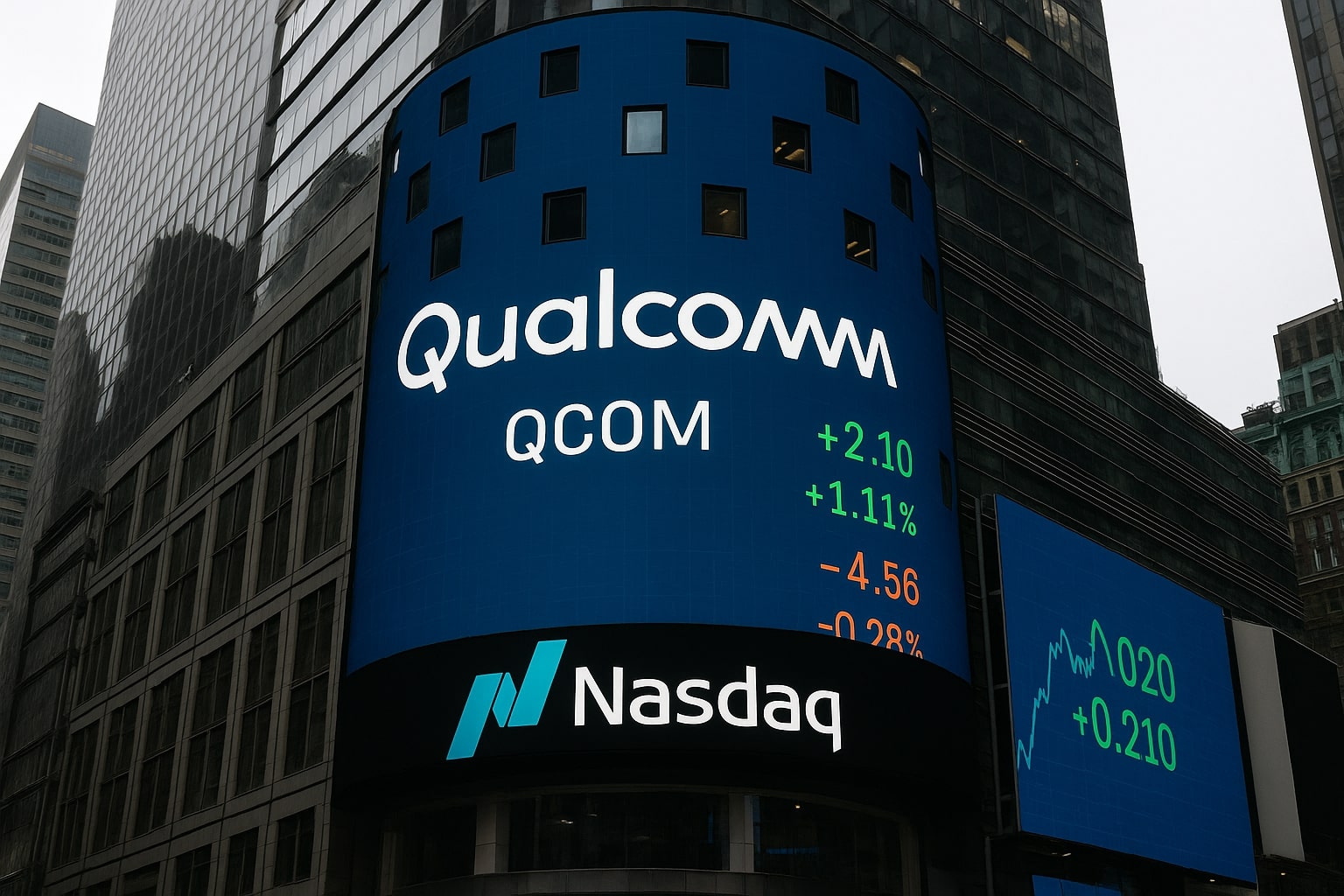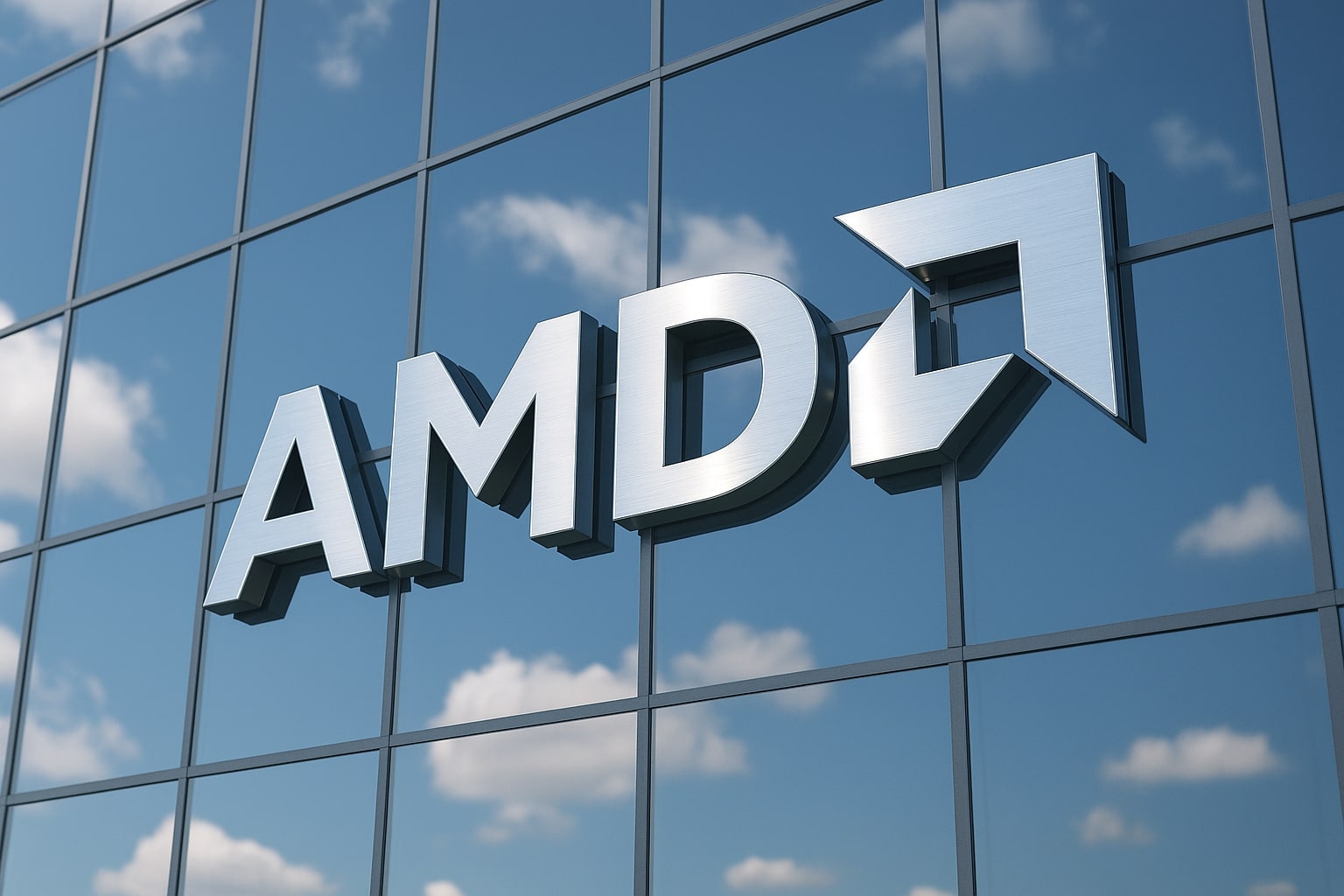
Qualcomm Stock Forecast: QCOM at $165.42 Balances AI Growth With Apple Risks
QCOM holds near $165 as strong AI and auto margins offset handset weakness, with valuation at 13x forward earnings keeping long-term upside toward $200 in play | That's TradingNEWS
Qualcomm (NASDAQ:QCOM) Stock Analysis: AI Leadership, Diversification, and Apple Headwinds
Edge AI Partnerships Strengthen Qualcomm’s Position
Qualcomm (NASDAQ:QCOM) continues to anchor itself as a leader in edge AI through strategic collaborations that extend beyond traditional handset reliance. The extended agreement with Xiaomi cements Snapdragon’s role in premium smartphones, ensuring the first launches of the next-generation Snapdragon 8 Elite chip in China and globally. At the same time, the COMPUTEX announcement of a partnership with Advantech highlights Qualcomm’s push into industrial IoT, with both companies targeting AI-driven applications across automotive, AR/VR, and smart infrastructure. This is critical, as edge AI remains one of the highest growth markets within semiconductors.
Revenue Trends Show Growth Moderating
In fiscal Q3 2025, QCOM reported revenue of $10.37 billion, a 10.3% year-over-year increase but a sequential decline for the second straight quarter. The QCT segment rose 11%, driven by IoT and stable handset demand, while the QTL licensing business grew 4% with margins expanding to 71%. Automotive stood out with $984 million in sales, up 21% YoY, marking a fresh record. However, handset growth of $6.33 billion (+7% YoY) reflects the maturity of the smartphone market, with MediaTek applying pressure and Apple’s looming transition to in-house modems threatening long-term revenue streams.
Profitability Expands Despite Slowing Top Line
Margins remained a bright spot. QCT delivered a 30% EBT margin versus 27% a year earlier, while licensing saw improvement to 71%. EPS of $2.77 surged nearly 19% YoY, outpacing revenue growth. The EPS beat consensus by $0.06, though analysts flagged that reduced R&D spending—down to $2.226 billion (-1.5%)—was a factor in margin gains. While this boosts near-term profitability, the risk is that underinvestment could weaken Qualcomm’s long-term innovation advantage in edge AI and datacenter expansion.
Cash Flow Weakness Amid Aggressive Buybacks
Operating cash flow dropped 5.8% to $2.875 billion, yet capital returns accelerated. Dividends climbed to $968 million while share repurchases more than doubled to $3.12 billion. With the dividend yield at 2.28%, buybacks provide a cushion for shareholder returns, though sustainability is in question given weaker cash generation. Investors must weigh whether the aggressive capital return strategy is masking underlying demand challenges. Full details of executive trades and insider transactions show management confidence but also raise scrutiny on timing relative to softening fundamentals.
Guidance Reflects Consumer Headwinds
For Q4, management expects $10.3–$11.1 billion in revenue, translating to just 4.5% YoY growth at the midpoint, a slowdown from Q3’s double-digit expansion. EPS guidance of $2.75–$2.95 implies growth deceleration to around 6% YoY, underscoring pressure from weaker handset demand and normalization of margin tailwinds. The outlook suggests that the margin expansion seen in Q3 may not be sustainable as consumer electronics remain under pressure from global economic headwinds.
Valuation and Competitive Landscape
At a forward P/E of 13x, Qualcomm trades at a steep discount to the IT sector average (GAAP forward P/E of 28.9, non-GAAP 23.2). This makes QCOM look undervalued given its diversified revenue streams in IoT and automotive, both growing more than 20% annually. The Apple modem transition remains a structural overhang, with billions in potential revenue loss as Apple phases out reliance on Qualcomm’s chips. However, multi-year agreements with Samsung (75% baseline supply contract) and Xiaomi mitigate some of the risk, ensuring Qualcomm maintains a foothold in global flagship devices.
Datacenter and Long-Term AI Growth
CEO Cristiano Amon has begun positioning Qualcomm for datacenter relevance, highlighting ARM-compatible CPU assets for hyperscalers. While still early and likely years away from material revenue contribution, these initiatives hint at Qualcomm’s attempt to expand into infrastructure markets traditionally dominated by Intel and AMD. If edge AI adoption mirrors the 5G cycle—where content per device multiplied—Qualcomm could unlock new layers of growth in a flattish handset unit market.
Verdict on QCOM Stock
Qualcomm (NASDAQ:QCOM)
sits at $165.42 in the latest session, down about 10% from its 2025 high near $183 but well above the yearly low of $142. At a forward P/E of 13x, the stock trades at nearly a 50% discount to the IT sector average, leaving upside if growth in edge AI and automotive continues. The Apple modem transition is likely to pressure revenues through FY26–27, keeping near-term rallies capped below the $180–$185 resistance zone. Strong institutional demand for Qualcomm’s edge AI roadmap could, however, push the stock back toward $200 if EPS growth re-accelerates in 2026.
Given the balance of risks, QCOM is best rated a Hold at current levels with a Buy zone near $155–$160 for long-term positioning, while short-term investors should watch $170 as the pivot. Until margins prove sustainable and the Apple revenue gap is fully addressed, Qualcomm remains attractive on valuation but constrained in momentum.
That's TradingNEWS
Read More
-
AMD Stock Price Forecast - AMD Shares Gains on $9.2B Q3 Surge
27.11.2025 · TradingNEWS ArchiveStocks
-
XRP ETFs (NASDAQ:XRPI, NASDAQ:XRPR) Cross $644M AUM as XRP-USD Climbs to $2.18
27.11.2025 · TradingNEWS ArchiveCrypto
-
Natural Gas Price (NG=F) Rises Toward $4.60 as Cold Weather and Record LNG Exports
27.11.2025 · TradingNEWS ArchiveCommodities
-
Stock Market Today - Dow 47,427 and Nasdaq 23,214 — Fed Cut Bets Power DELL, HOOD, and URBN in Holiday Rally
27.11.2025 · TradingNEWS ArchiveMarkets
-
USD/JPY Price Forecast - (Dollar–Yen) Steadies at 156.30 as Japan’s ¥21.3 Trillion Stimulus
27.11.2025 · TradingNEWS ArchiveForex


















